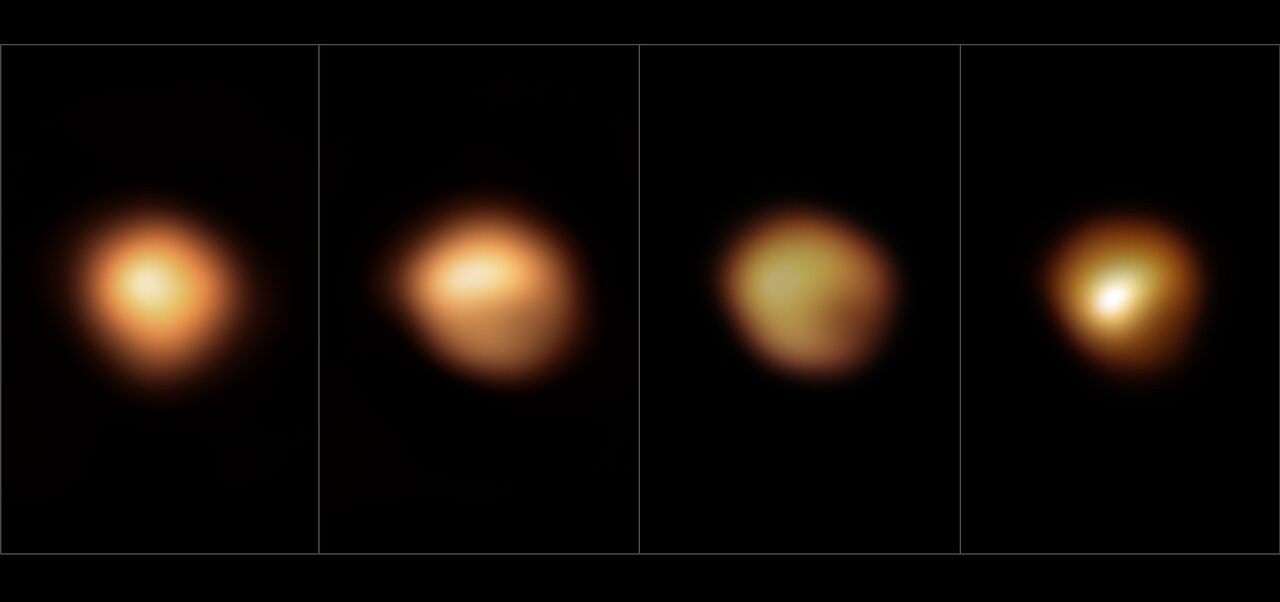A new study has offered a possible explanation for a mysterious drop in brightness exhibited by the star Betelgeuse, an event known as the Great Dimming. Betelgeuse is an aged, red supergiant star located relatively close to Earth and readily visible as one of the shoulders in the constellation Orion. The star significantly dimmed in brightness starting in late 2019 and persisting into April 2020—an event that was actually visible to the naked eye. While many kinds of stars often show variability in brightness for various reasons, the dimming of Betelgeuse was unprecedented and thus unexplained. In the new study, based on a series of observations taken by the Very Large Telescope in Chile, astronomers postulate that a dust cloud obscured part of Betelgeuse. The explanation suggests that diminished brightness is likely a part of normal stellar aging. See also: Betelgeuse; Orion; Star; Supergiant star; Variable star; Very Large Telescope

The Very Large Telescope observations took place over the several months–long course of the Great Dimming. The images obtained show that the southern hemisphere of Betelgeuse appeared ten times darker in visible light than usual during the peak of the Great Dimming. The research team surmised that this localized darkening occurred because of a drop in temperature across a region of the star's surface, consistent with longer-term observations of Betelgeuse's surface undergoing changes as giant bubbles of gas roiled the star's outermost layer, called the photosphere. Localized photospheric cooling could have caused a gas bubble that was previously ejected by Betelgeuse to subsequently cool off into solid stardust, a material that very effectively blocks visible light. After the stardust expanded away and dissipated, Betelgeuse returned to its normal brightness as seen from the cosmic vantage point of Earth. See also: 7-billion-year-old stardust is the oldest solid material on Earth; Interplanetary matter; Photosphere
The new results suggest that Betelgeuse's Great Dimming was not, as some astronomers speculated, an indication that the star will imminently explode as a supernova. This cataclysmic event is nonetheless still expected to occur within the next 100,000 years, given Betelgeuse's observably inferable, stellar evolutionary phase. The destruction of Betelgeuse will not pose a hazard to Earth but should produce a spectacular lightshow, a previous study has projected. The exploded star would likely shine with the intensity of half of the full Moon and even be visible during the daytime. See also: Stellar evolution; Supernova





